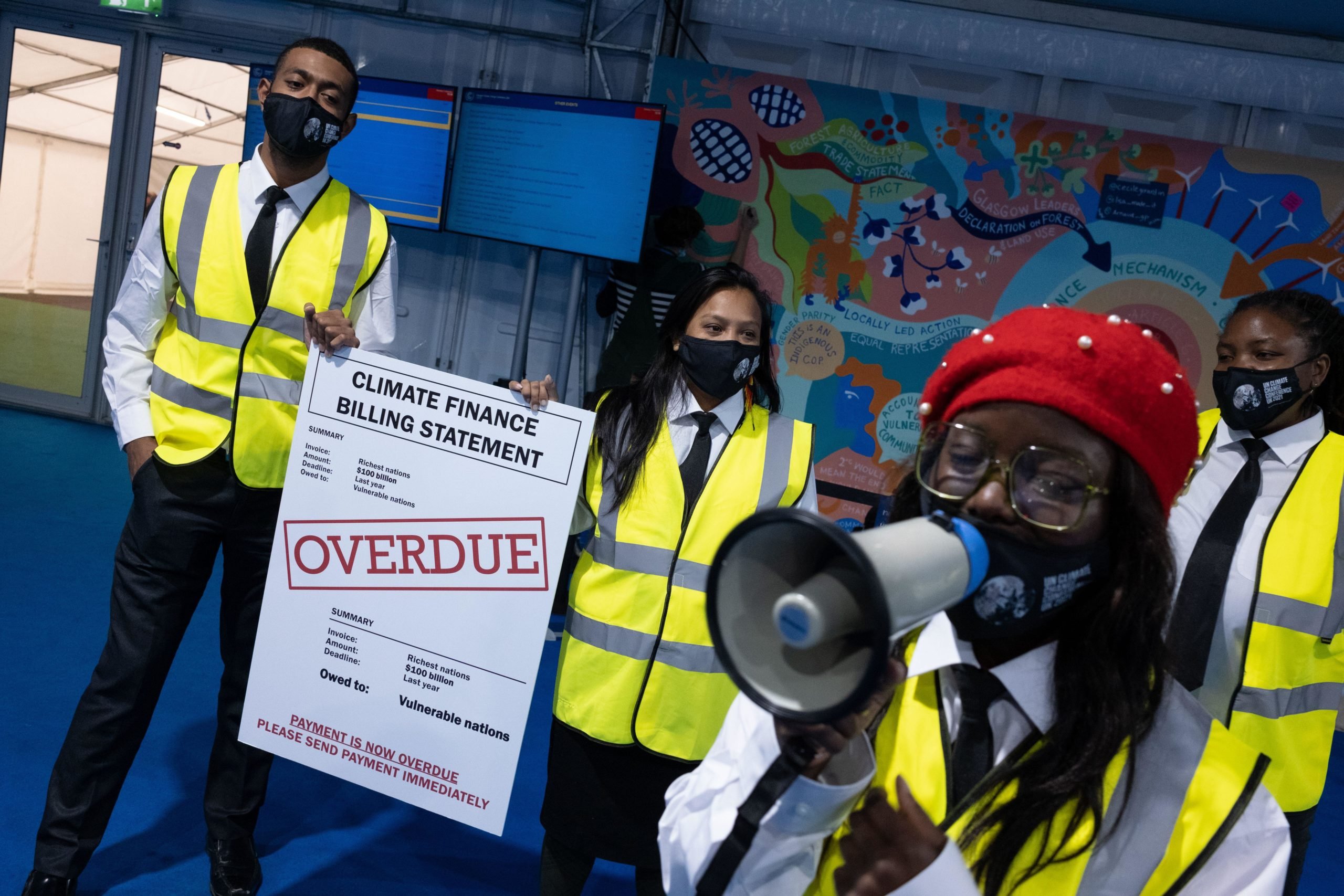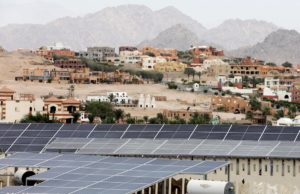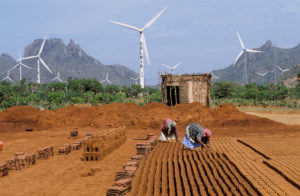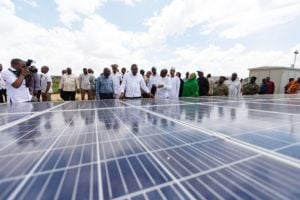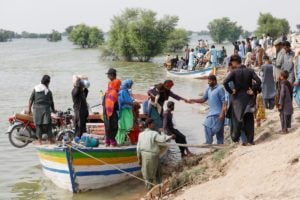Last year, it was the pandemic. This year, it is the war in Ukraine. The global conversation on climate change and the decades-old negotiations on how to deal with the problem have never been tested as brutally as in recent years. The pandemic revealed how easily the global financial system can come to a screeching halt, and how oblivious the Paris climate agreement is to this possibility. This year showed how war blindsides global climate agreements.
With Europe worried about its energy supply due to reduced gas flows from Russia, governments including Germany, Italy, Austria and the Netherlands have decided to dust off their coal power plants – the very same fossil fuel that they very confidently tried to force all economies to agree to phase out only a year ago at COP26 in Glasgow.
Coal is one of the dirtiest and most carbon-intensive ways to produce energy, but European policymakers are assuring the world that burning it is a necessary stopgap to help prevent a winter supply shortage. The German economy minister even stated that the decision is a “bitter” one, but that the country must do everything to prepare for the long winter ahead.
It is fascinating to see developed countries using the same argument that developing countries have been making over the years – ‘We need to allow ourselves the fiscal and carbon space to transition to cleaner economies’; ‘We need to address the immediate needs of our people first.’
One cannot help but marvel at the irony of the situation.
Against this backdrop, countries are coming together again for their annual climate meeting at Sharm el-Sheikh this November. Like every year, climate finance will take centre stage at COP27, both inside and outside the formal negotiations.
Let us look at the climate finance agenda.
Base new financial commitments on countries’ needs
The commitment developed countries made to provide USD 100 billion to developing countries every year by 2020 has not yet been achieved, however we count the USD 100 billion – public money, private money or both. A ‘new collective quantified goal’ (NCQG) on climate finance has to be set after 2025. This goal cannot be pulled out of thin air, as its predecessor was during the climate summit in Copenhagen. It has to be based on lessons learned over the past 13 years.
USD 5-11 trillion
The total value of needs that have been costed by developing countries; about 70% remain uncosted
The most critical lesson is to determine any financial commitment based on the needs of developing countries. Such an obvious starting point was realised and documented by the negotiators over 30 years ago when the UN Framework Convention on Climate Change (UNFCCC) was agreed. However, it took us decades to implement this decision. In 2021, a ‘needs determination report’ (NDR) that comprised of finance required for mitigation and adaptation was presented to the COP. Compiled from sources submitted by developing countries, including adaptation communications, national adaptation plans, national communications and Nationally Determined Contributions, it concludes that out of a total of 22,000 needs identified by developing countries, approximately 6,500 have been costed. That is around 30%. The total value of the costed needs is USD 5-11 trillion.
Not all countries have provided information on costed needs for mitigation and adaptation by sector and sub-sector, and therefore it is difficult to gauge exactly where the money is required the most. Developing countries have identified more adaptation than mitigation needs, but there is better costing of mitigation projects. This could be due to the lack of available data, tools and capacity to assess adaptation needs.
When we start speaking at COP27 about raising ambition on climate action, we should couple that conversation with targeting an ambitious and needs-determined goal for climate finance
While this shows that developing countries need to improve costing for their needs, it also clearly gives an indication of a realistic basis for the NCQG. The current USD 100 billion pledge amounts to anywhere between 0.9% and 2% of the actual needs. So, at COP27, when we start speaking about raising ambition on climate action, we should couple that conversation with targeting an ambitious and needs-determined goal for climate finance.
Understanding of finance needs has improved
In addition to quantified needs identified by countries themselves, the new goal must also benefit from the finer understanding that has emerged over the last few years from countries that have utilised the available climate finance.
First, there is a need for new and additional grant financing. A report published by the Climate Policy Institute (CPI) in 2021 found that 61% of climate finance has been raised as debt, of which only 12% is low-cost or concessional debt. Climate action should not mean further debt for developing countries to address a problem they have not even created. Increasing debt-to-GDP ratios will further impact the credit ratings of fragile economies.
Next, there is an urgent need to finance adaptation to the impacts of climate change. This is critical to safeguard economic development. The UN Environment Programme’s 2021 Adaptation Gap Report estimates that annual adaptation costs in developing economies will range between USD 155 and 330 billion by 2030. Yet adaptation finance represents just 14% of total public finance.
Climate action should not mean further debt for developing countries to address a problem they have not even created
Third, the private sector is not a panacea, nor is it leveraging climate finance. Despite developed countries’ insistence, the private sector has not been unlocked. If we look at the same CPI report, which calculates all climate finance in both developed and developing countries across the public and private sectors, it concludes that private actors contributed only 49% of the total in 2019-20. This includes household spending on electric vehicles. Clearly then, all the promises of mobilising private finance in multiples of public sector financing have so far proved to be a mirage. Should we still be buying the same argument for the NCQG?
We must also have an agreement on the definition of climate finance and the counting methodology. In the absence of a definition, there is no agreement today on the amount of money that has moved from developed to developing countries. If the flow is not clear, climate action will not be either, and the real picture of how far or close countries’ development trajectories take us to the two degrees Celsius target set at Paris will continue to be a grey area.
Finally, developing countries must not limit themselves to the formal COP agenda. When Pakistan was hit by one of the worst floods in living memory this year, affecting millions of people and losing billions of dollars, in the absence of an international mechanism that is immediately triggered to address the impacts of loss and damage the country had no choice but to divert its own or loaned resources to save lives and livelihoods.
Climate finance must move beyond UN negotiations
Today it is Pakistan. Yesterday it was another country, and tomorrow unfortunately it will be yet another. While COP27 will debate setting up a finance facility for loss and damage to address the kind of harm that Pakistan suffered, the prognosis from pre-COP consultations is not good.
Whatever happens at the COP, that should not stop developing countries which are facing massive losses from demanding debt restructuring. We saw the EU and United States rally a global pledge to cut methane emissions by 30% by 2030 on the sidelines of the 2021 COP. They got around 100 countries to sign up. It was never part of the formal negotiations, yet an outcome was achieved.
Similarly, we saw debt refinanced in the face of a global health crisis due to the Covid-19 pandemic. Climate impacts that countries are in no position to manage must be treated the same way.
Debt crisis is a chokehold on any climate action. The two should no longer be treated in isolation.
